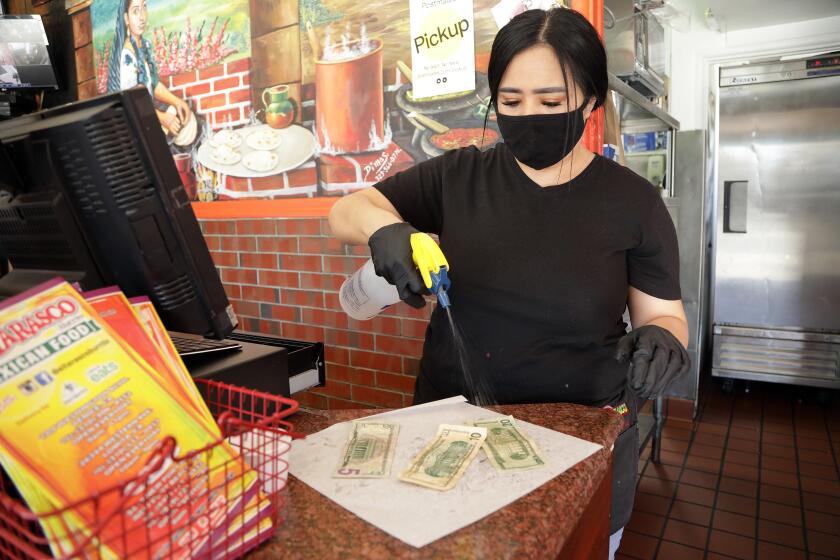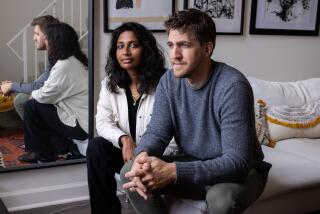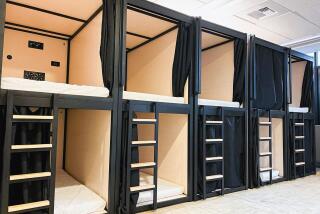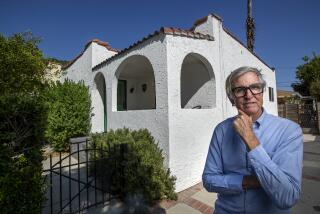She moved in with 17 roommates for the company and to save money. Then came coronavirus
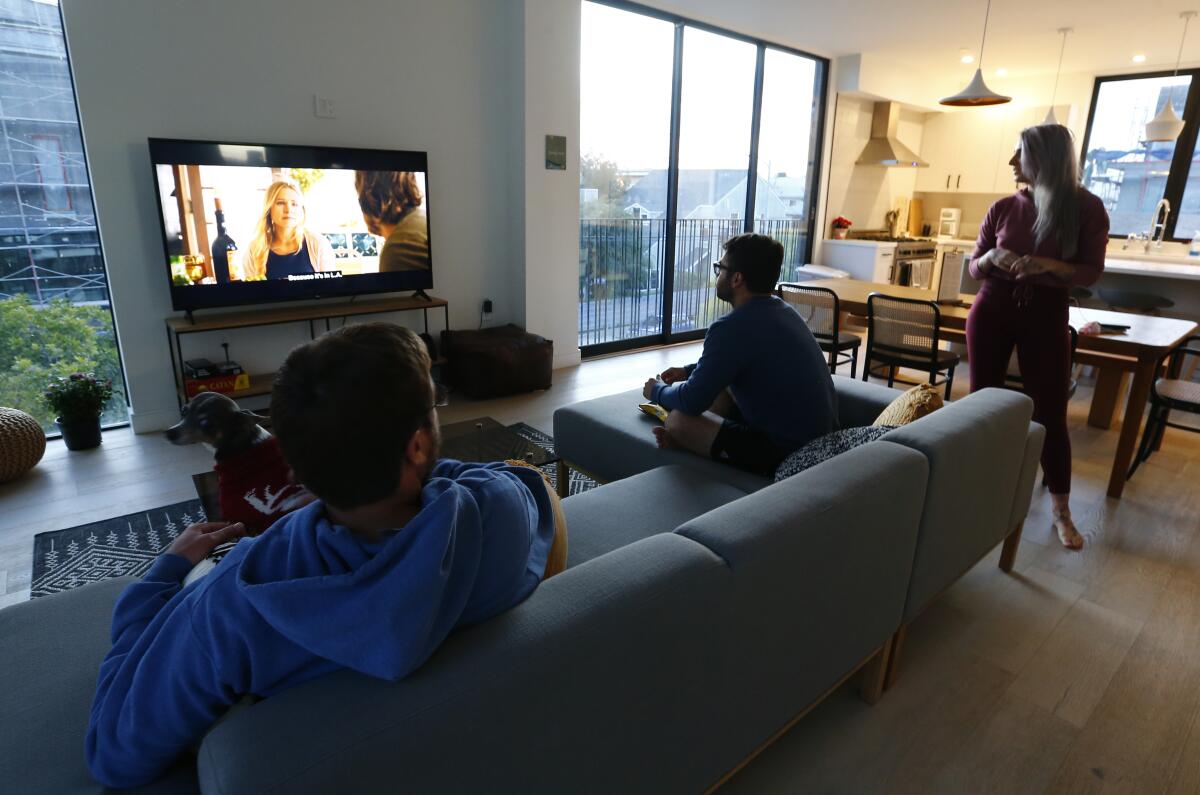
- Share via
Early Saturday evening in a bright, three-story shared-living apartment complex in Venice, two twenty-somethings, Jake Viramontez-Smith and Colin Huitfeldt, sat on the couch in a living room watching a movie while their housemate, Julia O. Test, cooked a vegan supper in the kitchen.
The noise brought Michael Dash out of his room downstairs to see what was going on. He bounded up the steps, greeting the trio. He was wearing blue rubber gloves.
“I’m skeeved out by people a little bit,” said Dash, a 45-year-old entrepreneur.
His reaction — eager for the company but anxious about the novel coronavirus that they might be carrying, even without flu-like symptoms — reveals the tension of living in a shared space right now. While public health officials are advising people to stay at home and practice social distancing, that’s all but impossible for those whose homes are co-living spaces.
These apartment complexes range from dorm-like bunk beds with shared bathrooms, kitchens and common areas to furnished, studio-style apartments with individual bathrooms and large, shared living rooms, kitchens and amenities. The idea is to provide renters with luxuries common to high-end condos, but at a more affordable price and with a built-in social network.
And with rents in hot urban markets, such as Los Angeles and San Francisco, climbing over the last few years, the popularity of such co-living, or shared, spaces has been on the rise.
Dash and other co-living residents say they’re coping with the current reality of sharing a home during a pandemic by limiting the number of visitors, cleaning a lot more and staying out of shared spaces more than they otherwise would.
But they’re also thankful to be riding out the pandemic with other people.
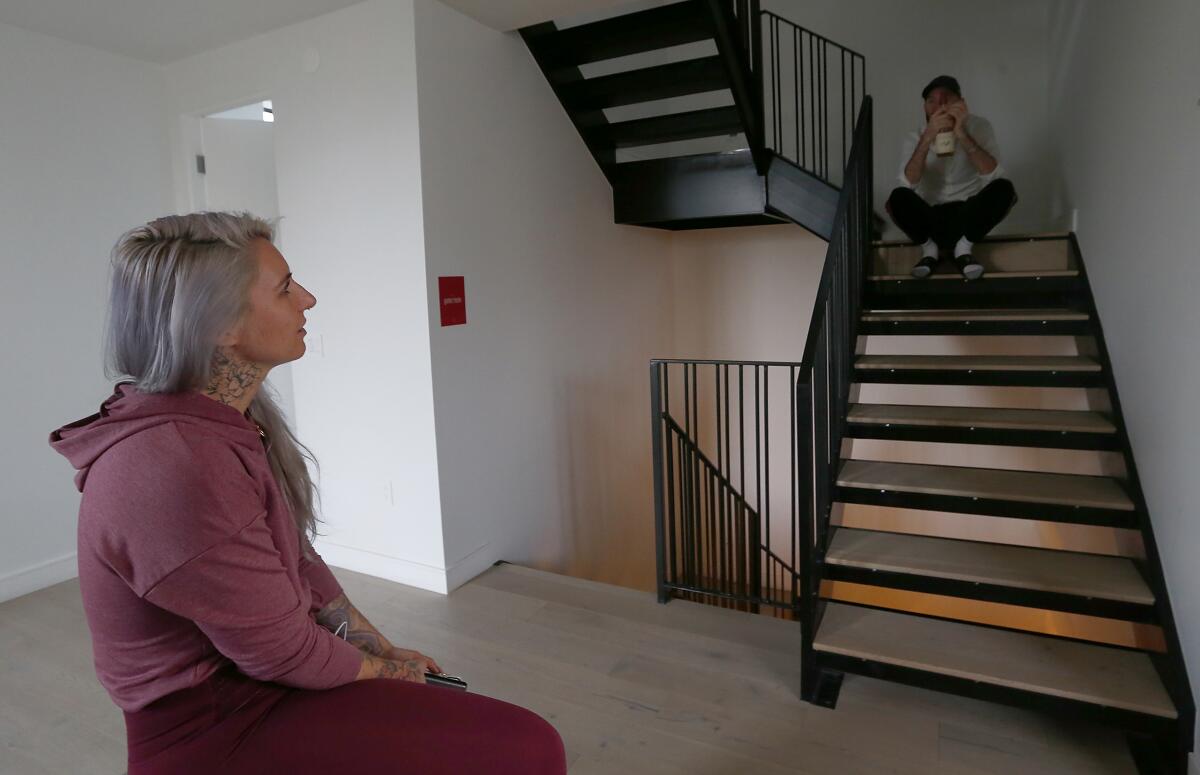
When Test first came to Los Angeles a year and a half ago, she lived by herself in Hollywood and quickly felt isolated. She moved into the Venice shared-living space as soon as it opened in October.
“I think about what if this would have happened while I was in my own studio alone in a high-rise,” said Test, a 34-year-old photographer. “It would be so horrible. I would be so lonely.”
The social distancing orders have actually enabled even more connections with her housemates and others in her apartment complex.
These are some of the unusual new scenes across the Southland during the coronavirus outbreak.
If it weren’t for the stay-at-home order, Test said, she would be spending her Saturday night dancing with friends, not watching television at home. She also chafed at not being able to go to the beach or go hiking. But Test is thankful to at least be passing the time posting videos on TikTok with Viramontez-Smith, a 28-year-old construction worker from Ohio.
“I feel like we’re actually roommates now,” she said.
The complex’s 20 bedrooms — two of which are empty — are divided into four areas, along with common rooms. So, it took a pandemic-prompted Zoom gathering for Test to meet Stephen Whelan, a 38-year-old who lives on the opposite side of the complex.
They met in person on Saturday while Test was giving a tour to a Times reporter and photographer, and they greeted each other from a distance. Whelan was drinking rosé straight from the bottle — “It’s quicker than unloading the dishwasher” — and after chatting about bad reality television, Test invited him to come over to her side of the complex later.
Their home is upscale for a co-living apartment complex. Built by San Francisco developer Starcity, the complex’s advertised rents start at $1,900 a month. That’s still cheaper than the $1,985 median rental listing for a studio in the beach community, according to real estate website Zillow.
Because of this relative affordability, operators have long believed that demand would remain strong during an economic downturn. But they didn’t plan for a downturn caused by a highly contagious virus that requires social distancing.
“The irony is, during a recession, PodShare would have done so well because we’re a very flexible housing model,” said Elvina Beck, PodShare’s founder and CEO. “But when it’s a recession based on a pandemic, that’s when it’s like, ‘Oh crap.’”
At PodShare, which has locations in downtown, Westwood, Los Feliz and other L.A. neighborhoods, tenants generally sleep in one big room on wooden bunk beds. Beck said the company has been disinfecting surfaces every couple of hours, distributing lots of hand sanitizer and making more with alcohol and aloe vera. The company also has set aside private rooms so anyone exhibiting symptoms of COVID-19 can go into isolation.
There’s also more space for people to spread out and socially distance because business is down by more than half of what it usually is at this time of year, Beck said. Out-of-town travelers, who make up a number of her tenants, aren’t coming.
There’s more room at Up(st)art, too. The company owns eight co-living spaces marketed to young artists, musicians and others hoping to break into the entertainment industry.
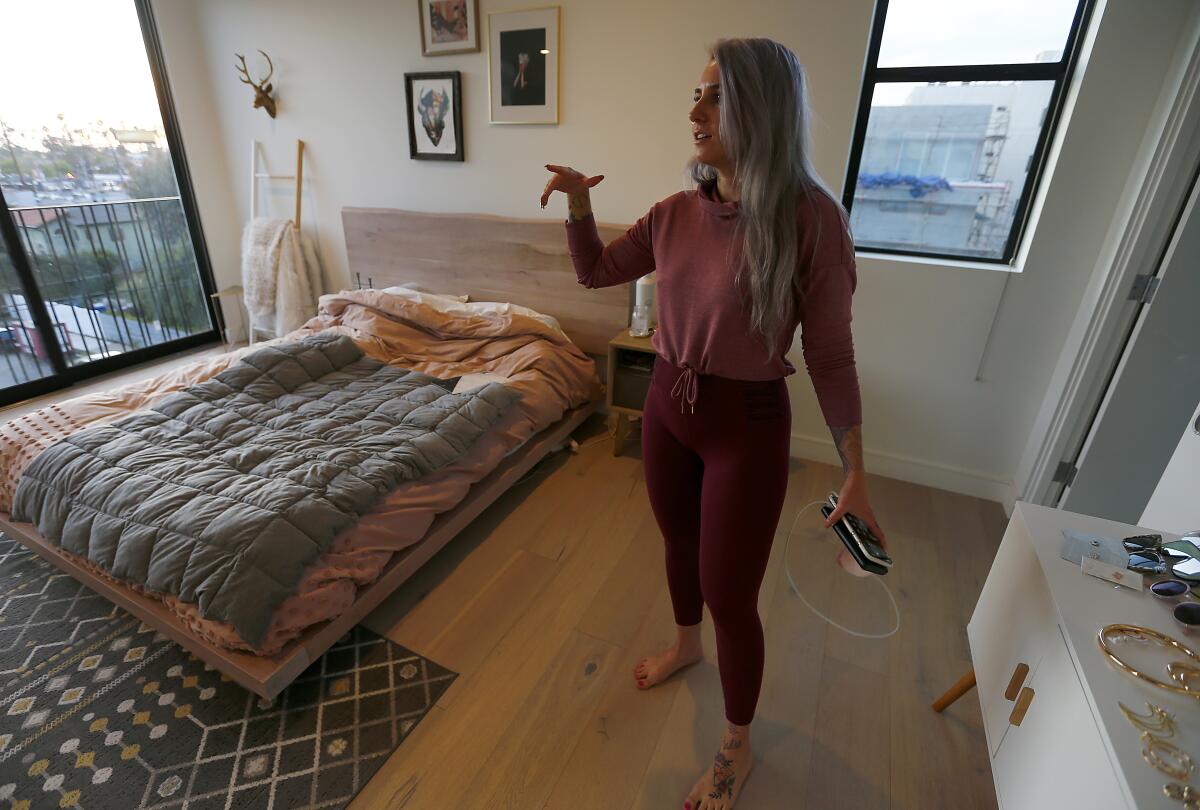
Jeremiah Adler, the company’s co-founder, said his tenants have been particularly hard hit because so many have lost their jobs at bars and restaurants that have gone to takeout and delivery only or have closed outright. When you couple those tenants’ financial problems with some nervousness about staying healthy in a shared space, many have moved out.
“If you’re 22 years old and just lost your job bartending at Wood & Vine, going back to your parents’ house in Michigan right now is pretty attractive,” he said.
So many Up(st)art tenants have left that he has been able to keep one of his complexes entirely empty in case someone needs to be quarantined.
For those who have remained, Adler has tried to help keep them healthy. Most of his tenants are in their early 20s, and he and his staff play the role of parents. They’ve asked tenants to set alarms on their phones for every two hours as a reminder to wash their hands.
Adler has noticed that many renters are bonding over the experience, though.
“Normally people are busy with their lives and may be irritated with their roommates because one of their bananas went missing,” he said. “But now, people are saying they’re understanding the true value of the community.”
Los Angeles Times’ visual coverage of the coronavirus crisis
The coronavirus also has brought people closer together at the Florence, a single-room occupancy hotel in skid row. Long before co-living spaces became trendy for upwardly mobile young people flocking to hip enclaves of Los Angeles, these modest residential hotels served as refuges for low-income people.
The Florence has shared bathrooms, showers and a community kitchen. Wendell Blassingame, a 69-year-old who has lived there for 13 years, said residents are staying away from the lobby and, when others are in the hallway, stepping into rooms to keep a six-foot distance.
One morning last week, Blassingame was considering whether to go to the store to buy bread, but then found out that two other tenants needed eggs, bacon and rice. They decided that just one of them should venture out.
“I never knew a couple of my neighbors the way I know them now,” Blassingame said. “I’ve gotten a chance to talk to them in ways I hadn’t before.”
More to Read
Sign up for Essential California
The most important California stories and recommendations in your inbox every morning.
You may occasionally receive promotional content from the Los Angeles Times.


